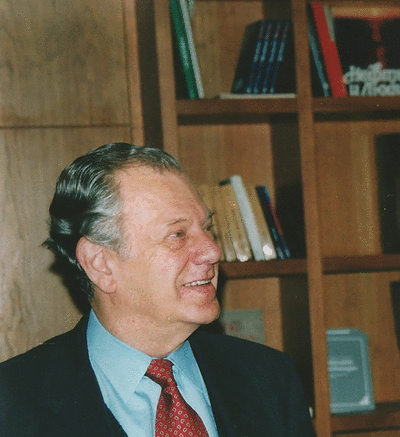
From our present standpoint in the second decade of the 21st century it is perhaps difficult to realise just how radical this was. In the late 1950s people in Britain, as in other Western countries, thought of acupuncture—if they thought of it at all—wholly in traditional Chinese terms. To describe it in the way Felix did required him to rethink everything he had been taught about acupuncture by all the 'experts' he had encountered.

As a young doctor Felix had to travel abroad to study acupuncture since no one was teaching it here; this was comparatively easy for him because he was a good linguist and had plenty of contacts in Europe. He saw acupuncture being used and was impressed by the results. He studied at the University of Montpellier in the south of France and at Munich and Vienna. Later, he even studied Chinese with the help of sinologists in Britain so as to be able to read the classic texts. So his subsequent abandonment of the traditional system wasn't due to lack of knowledge. It was based instead on fresh thinking and exact clinical observation.
He wondered what would happen if he put needles in 'wrong' places instead of the 'correct' acupuncture points. When he tried this he found that the effects were the same. He therefore began to question the teaching he had received and eventually arrived at a radical reinterpretation of acupuncture.
By the time I attended his course in 1977 he had rejected practically all the traditional ideas about acupuncture. He now regarded it as a means of altering the activity of the nervous system and as a treatment that could be explained in terms of the modern understanding of anatomy and physiology. There was no need to talk about esoteric ideas such as qi or yin and yang.
According to his new view, neither acupuncture points nor the so-called meridians exist as they are usually understood. Great precision in locating 'points' is unnecessary; instead we should be thinking of areas. In many cases these could be quite large: for example, in some patients needling anywhere below the knee might have the same effect as using the classic point Liver 3 in the foot (Felix's favourite site).
He introduced other departures from tradition as well. One was the use of periosteal (bone) needling, both to treat joint pain such as that due to arthritis and also to produce more generalised effects in a wide area. Another was his recognition of a subset of patients who responded particularly strongly to acupuncture, whom he designated strong reactors. Disorders that usually don't respond to acupuncture might do so in a strong reactor. But if a strong reactor were treated too vigorously the result could be a worsening of the symptoms or a feeling of general malaise lasting for some hours or even days.
As time went by Felix came to believe that many traditionalists over-treated their patients. Increasingly he favoured very gentle treatment, with the insertion of few needles—sometime only one—and the duration of needling being brief: seldom more than a minute or two and quite often just a few seconds.
While these ideas usually horrified traditionalists they were certainly easier for doctors trained in modern medicine to understand and accept. This was fortunate because more now wanted to learn. Felix had started teaching acupuncture to doctors in the 1960s although at first few came forward to learn. But in the 1970s the numbers increased, partly because attitudes to unorthodox treatments were beginning to change but also because advances in the scientific understanding of pain were making acupuncture seem more comprehensible in modern terms. Another influence was President Nixon's visit to China in 1972,, during which some doctors in the party saw acupuncture being used and a journalist who developed acute appendicitis was treated postoperatively with acupuncture and found it beneficial.
Felix kept in touch with his former students by means of a newsletter and an annual clinical meeting; they constituted an informal medical acupuncture society. In 1980 matters were made more formal when the British Medical Acupuncture Society, formed mainly of Felix's former students, was founded; he was its first President. It now has over 2000 members from a wide range of health professionals.
Felix wrote several books about his later view of acupuncture. The most important of these was Reinventing Acupuncture: A New Concept of Ancient Medicine. The first edition appeared in 1993 and the second in 2000. Here he described how his understanding of the treatment evolved and gave practical details of his methods. I still dip into it from time to time and continue to be impressed by how much my own experience agrees what he describes. All of us who use acupuncture today in a modern context are deeply indebted to him.